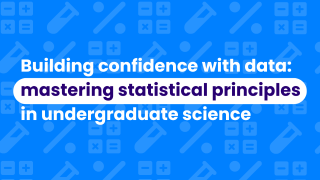Throughout my career as a secondary and further education chemistry teacher in the UK, France, and The Netherlands, questioning has always been one of the pedagogical techniques I focused on year after year. Good questioning comes in many varieties throughout a lesson, including knowledge recall, closed, open, probing/Socratic, and hinged questions.
An effective question for any student is appropriate to their level; it must challenge them but not be so difficult that it results in perceived failure. The best questioners do it strategically to ensure all students remain attentive and compelled to think, not just the keen. My goal was always to have a classroom structure where every student:
- Participates willingly in class discussions
- Is willing to try their best to answer a question, and does not simply say ‘I don’t know’ at the first opportunity
- Feels safe and comfortable enough in front of their peers and teacher to try to answer questions, knowing there is a possibility of getting it wrong
- Is challenged just the right amount to keep them in the ‘struggle zone’ [1] [2]

It falls to the educator to facilitate this culture as much as possible, to every student, in every lesson, all year long. Hence, it is a difficult task that needs constant training and planning.
“Despite our time-honoured adherence to the humble question, how many teachers stop to consider why they are asking a question and what they are hoping to achieve by asking it?” [3]
One example of how I worked towards my ideal classroom culture was to plan questions prior to the lesson. Sometimes I did not get a chance to ask all of them, and sometimes my wonderfully planned questions went out the window due to the students and their responses changing the narrative of the lesson. Good questioning turned out to be a real balance of planning and improvisation. However, I found following these steps made me actively think about the questions I asked more, and move towards that ideal classroom culture.
How to effectively plan levelled questions:
1. Start by clarifying the goal or the concept you are teaching. I tended to share key questions with the students at the start of the lesson so they knew the goal was to be able to answer this by the end.
Concept: Hydrogen Bonding; how they arise and the effects on solubility
Key question: Why do the solubilities of ethanol, dimethyl ether, and ethane differ?
2. Break the goal down into success criteria. These are the things students must be able to do in order to answer the key question.
Draw accurate structures of ethanol, dimethyl ether, and ethane.
Define electronegativity and give examples of highly electronegative atoms.
Describe and sketch the concept of polarity.
Explain electrostatic attraction and repulsion.
Explain the formation of hydrogen bonds between molecules.
3. Based on the success criteria, plan questions (literally write them down on a piece of paper that you can keep to hand) which get progressively more challenging. Move from closed to open questions that require more complex answers.
For example:

Draw the fully displayed structure of ethane.
Identify molecules that contain a hydroxyl group.
Draw the functional group of an ether.
Define electronegativity.
Suggest a highly electronegative atom found in ethanol.
Identify and compare a polar covalent molecular and a non-polar covalent molecule.
Suggest how the polarity of two ethanol molecules could affect their attraction or repulsion to one another.
Explain the components of a hydrogen bond.
Compare hydrogen bonding to another intermolecular force.
Suggest how a molecule’s ability to form hydrogen bonds could be affected by its structure.
4. Think about your students and their appropriate starting point on your ladder of questions. Remember that all students can get on the ladder at any point and therefore be successful.
IMPORTANT: don’t let your current conception of a student’s attainment level limit the questions you ask them, they may very well surprise you! Use this assignment as a general rule only.
5. Finally, make sure to plan for misconceptions. Use your professional experience to predict where students may misunderstand and make a note of this. This will help you watch out for signs of misconception in the lesson.
So once you have your planned, levelled questions, you have a tool kit to refer to during the lesson. Remember this question ladder is fluid, you can move up and down as you get feedback from the students as to their understanding. Involve all students in the questioning; use simpler, closed questions to build confidence in the individuals. Always refer back to the key question and success criteria. Make sure students can identify which criteria they meet, and encourage them to share this with you so you can further adapt your teaching.
These principles can be applied to higher education scenarios such as workshops and tutorials. Understandably perhaps more difficult during lectures with large cohorts of students, however use of technology such as survey questions and polls could help facilitate this.


.png)